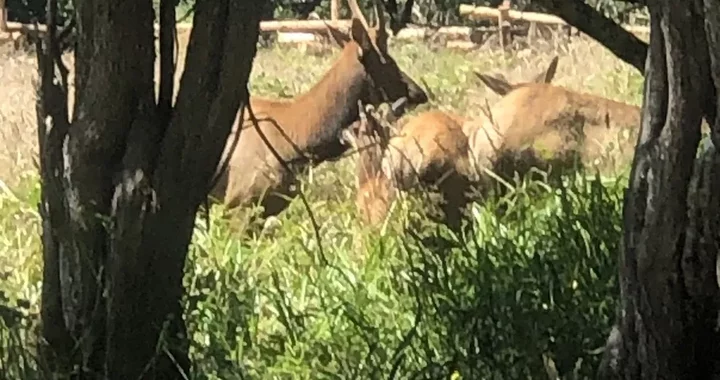Subspecies
Cervus canadensis roosevelti (Roosevelt elk)
Cervus canadensis roosevelti. Photo: no rights reserved
The Roosevelt elk (Cervus canadensis roosevelti), also known as Olympic elk, is the largest of the four surviving subspecies of elk in North America. They live in the rain forests of the Pacific Northwest and were introduced to Kodiak, Alaska’s Afognak and Raspberry Islands in 1928. The desire to protect the elk was one of the primary forces behind the establishment of the Mount Olympus National Monument (later Olympic National Park) in 1909.
-
Humboldt Life
-
Kingdom: Animalia (Animals)
-
Phylum: Chordata (Chordates)
-
Subphylum: Vertebrata (Vertebrates)
-
Class: Mammalia (Mammals)
-
Subclass: Theria (Therians)
-
Infraclass: Placentalia (Placental mammals)
-
Superorder: Laurasiatheria (Ungulates, carnivorans, and allies)
-
Order: Artiodactyla (Even-toed ungulates and cetaceans)
-
Suborder: Ruminantia (Ruminants)
-
Family: Cervidae (Deer)
-
Subfamily: Cervinae (Old world deer)
-
Tribe: Cervini (Typical old world deer)
-
Genus: Cervus
-
Species: Cervus canadensis (Wapiti)
- Subspecies: Cervus canadensis roosevelti (Roosevelt elk)
-
Species: Cervus canadensis (Wapiti)
-
Genus: Cervus
-
Tribe: Cervini (Typical old world deer)
-
Subfamily: Cervinae (Old world deer)
-
Family: Cervidae (Deer)
-
Suborder: Ruminantia (Ruminants)
-
Order: Artiodactyla (Even-toed ungulates and cetaceans)
-
Superorder: Laurasiatheria (Ungulates, carnivorans, and allies)
-
Infraclass: Placentalia (Placental mammals)
-
Subclass: Theria (Therians)
-
Class: Mammalia (Mammals)
-
Subphylum: Vertebrata (Vertebrates)
-
Phylum: Chordata (Chordates)
-
Kingdom: Animalia (Animals)



























































































































































































































































































































































































































































CLICK TO MANAGE